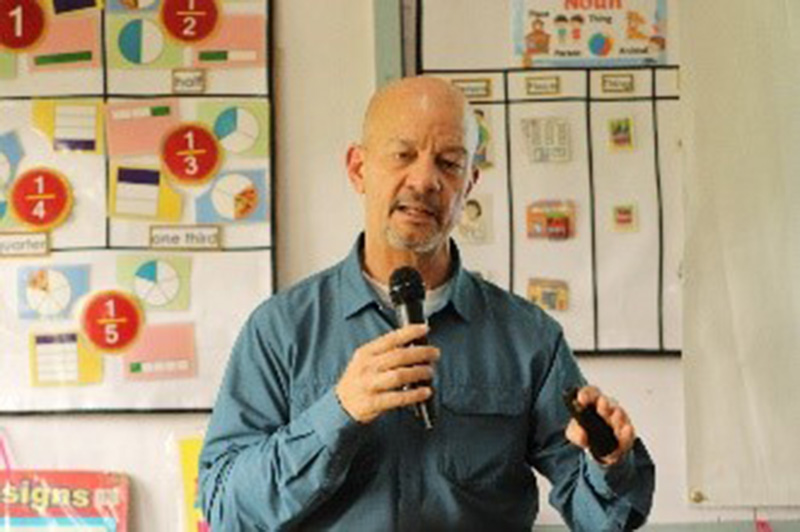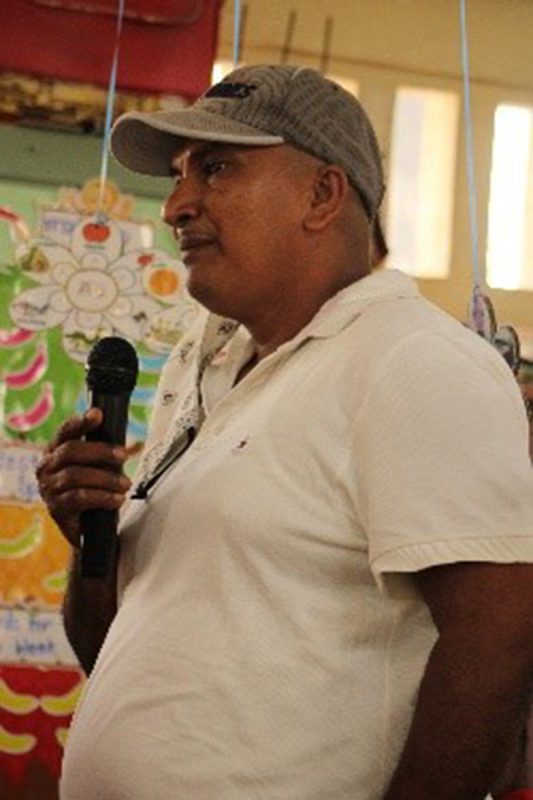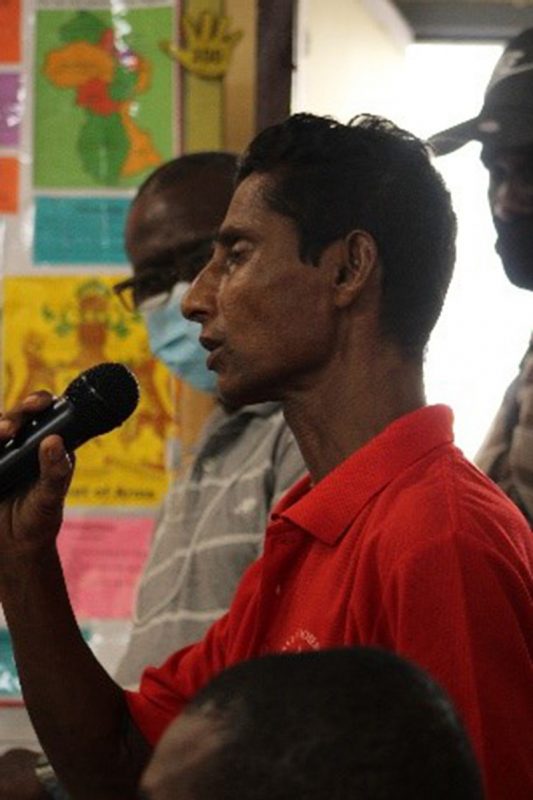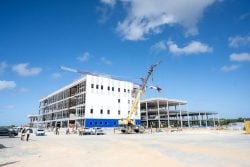While stating that they welcome development and fully support the planned gas-to-shore project, residents of the lower end of the West Bank of Demerara were on Friday mainly concerned about if jobs would be available and if some of them would be displaced by the planned pipeline but they got no satisfactory answers.
On Friday, ExxonMobil and its consultant Environmental Resources Management (ERM) held the final public disclosure meeting to discuss the impact study of the gas to shore project at the Patentia Primary School. The meeting was attended by over 50 residents from the communities of Wales, Patentia, Vive-la-Force, Maria’s Lodge and other areas on the lower end of the West Demerara.
The main concern for the communities that once thrived on the operations of the now shuttered Wales Sugar Estate is access to jobs. The residents, many of whom remain unemployed due to the closure of the estate and the absence of a transition plan, questioned ERM and ExxonMobil officials about the creation of jobs particularly to absorb the retrenched sugar workers.
Friday’s session was the last of the 11 public-disclosure meetings ERM has planned as part of the public comments period on the Environmental Impact Assessment (EIA) for the gas to shore project being executed by ExxonMobil’s subsidiary Esso Exploration and Production Guyana Limited (EEPGL).
At the meeting, Exxon’s Gas to Shore Manager Friedrich Krispin along with ERM’s Technical Director Julia Times spoke of the benefits of the project to the communities. Along with the reduced cost of electricity and the reduction of harmful greenhouse gas emissions, the duo also spoke about the jobs that would be created during the construction phase of the project which is expected to commence by the latter part of this year once all approvals are granted. The project is expected to begin its phase one operation by 2024 and be fully functional afterwards.
Many of the residents at the meeting were at some point involved in the sugar industry and they pressed Krispin to speak on the issue of job creation.
Former Wales Estate machinist Shafeek Khan along with teacher Tikaram Persaud questioned Krispin about access to jobs for the community as well as training that would be provided for, particularly, former sugar workers to access the opportunities.
“We will like to know if y’all company [ExxonMobil] taking on people fuh work because like how me work 22 years with GuySuCo I want fuh know if y’all go come fuh take on people to work with y’all?” Khan questioned.
In response, Krispin said “Very few, very, very few [jobs would be provided directly from ExxonMobil]. The reality is that what we normally do is we put together a project management team, which is kind of a specialized team of engineers, etc and then we hire contractors to do all the work. The contractors are the ones who provide jobs”.
On the issue of training, again, Krispin reiterated that the onus is on the contractors that they hire but he did explain that the basic training in safety and construction is usually provided by the contractor. He told the gathering that the contracts that Exxon signs with its contractors mandate them to hire locally as well as satisfy the requirements of the Local Content legislation.
Stringent
Resident and farmer Charles (only name provided) called on Exxon to employ stringent mechanisms to ensure that the contractors satisfy the mandate of benefits to locals.
“We want this thing monitor by Exxon to see that the people in the area of benefit because, you know [if] a man come from Berbice and get a contract here he will bring his Berbician friends them to work and leave out people from the area and that normally happen. What I am saying, Exxon need to work along with the group in the village to see that no advantage is taken because right now people are starving for jobs here.
“I would recommend that Exxon work along with the village leaders to make sure that you know, things run smoothly. It can be a part of that you need to caution the contractors to let them know that they need to take on people from the area,” he suggested.
Charles provided an example of locals being bypassed in the community of Free and Easy explaining that there is a contractor doing work in the area and he has chosen to employ persons from outside of the village.
“I feel your pain, I really do because I know that you lack jobs in the area and we need to make sure that we employ people in the area. The way we do that is several. First of all, we tell the contractors they must, it’s in the contract. We tell them what expectations we have about hiring locals about providing full and fair opportunity,” Krispin assured.
Several of the residents there also questioned the benefits that the project is going to bring since it would not provide adequate jobs to meet the demands of the community. It was clear that the residents went to the disclosure meeting hoping that they would be provided with the opportunity to become employed as part of the project but left there without any assurance.
In addition, questions were also raised about the relocation and displacement that some residents would face. While both ERM and Exxon attempted to answer the questions they could not provide comprehensive answers to the residents.
They consistently informed the residents that the government is leading the effort. Krispin said that EEPGL is working with the government to come up with a livelihood and resettlement scheme that reflects international standards.
The residents were also sensitized on the contents of the environmental study.
ERM submitted the study to the Environmental Protection Agency on April 13, 2022 triggering the 60-day public review process. In accordance with Section 11 (10) of the Environmental Protection Act, Cap. 20:05, members of the public can review the EIA and make written submissions to the Environmental Protection Agency, as they consider appropriate. All submissions are to be addressed to the Executive Director of the EPA and sent to the Ganges Street, Sophia office or emailed to epa@epaguyana.org.
June 18 is the final day for submissions after which the EPA will review the documents received and either approve the study as is or ask ERM to conduct additional studies and provide more data. There is no time limit for that process which is solely at the EPA’s disposal.
The pipeline is expected to land at Crane/Nouvelle Flanders, West Coast Demerara and make its way to Wales on the West Bank of the Demerara. The project will involve capturing associated gas produced from crude oil production operations on the Liza Phase 1 (Destiny) and Liza Phase 2 (Unity) Floating, Production, Storage, and Offloading (FPSO) vessels.
The project is pegged at US$1.3 billion and the government hopes it will lead to vastly lower energy costs that would enable a spurt in manufacturing. However, there have been doubts over the country’s execution capacity and whether a feasibility study has been done for this massive project which would be the biggest in the country’s history.








